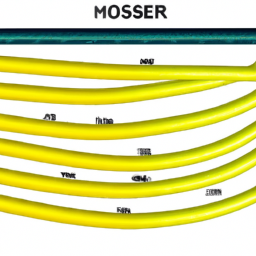Size of Garden Hose What You Need to Know
Table of Contents []
What Size Is Garden Hose
Introduction
Welcome to our page on garden hose and their sizes. We'll be taking an in-depth look and breaking down all the important information to help you decide what size garden hose would be right for you.
We'll first discuss hose diameters available on the market before moving on to the length of garden hose you might need for particular applications. From there we'll cover the materials hoses are made of, before rounding off with a few tips on how to care for your garden hose.
Diameter
Garden hoses come in an array of sizes. The most common diameters are 1/2, 5/8 and 3/4 inch. In general, the bigger the diameter of hose, the more water it can handle. According to experts, the best size for a garden hose is 5/8 inch, but a 3/4 inch hose can deliver stronger water output.
A half inch garden hose can be used for a few simple tasks like privacy planting, potting, and container watering. For bigger jobs like watering the lawn, washing the car, and washing outdoor furniture, bigger hose diameters weighing up to 25lbs or more may be the better choice as they will be more powerful and will last longer with frequent use.
Length
Garden hoses are measured and rated by their length, usually from 25 to 100 feet. Longer hoses provide much more access to a larger area. In general, a 25ft hose is long enough for smaller jobs like watering your lawn or washing your car. Longer hoses can be used for larger jobs such as filling a kiddie pool, or supplying water to a sprinkler system.
The longer the hose, the more it can weigh. Therefore, it is important to pay attention to the material the hose is made of. If you will be carrying the hose around for frequent use, a lightweight material can be beneficial since it won't strain your muscles too much.
Materials
Garden hoses come in a variety of materials from rubber, to vinyl to hybrid hoses. Rubber hoses are the most common type and the most durable. They are strong, flexible, and work well in extreme temperatures. However, rubber can be heavy and cumbersome to carry around. Vinyl hoses are less durable but lightweight and easy to maneuver. Hybrid hoses are a combination of both vinyl and rubber and thus are a mix of lightweight and durability.
No matter what material you choose, just make sure the material is rated for the type of job you want to do. If you plan on using the hose for large projects outdoors like watering the lawn and washing the car, make sure to get a high-quality hose that is UV protected, kink-resistant, and rated for outdoor use.
Care
Taking care of your garden hose is essential for its longevity. Here are some tips for proper care:
- Coil your hose when not in use. Don't leave it uncoiled because dragging it around can wear down the material
- Regularly inspect the inside of the hose for any kinks or cracks. If you see either, fix or replace the hose
- Wash out your garden hose with a mix of vinegar and water every once in a while to make sure there is no build-up of dirt or debris
- Store your hose in a shady spot so that it is protected from the sun and other weather conditions
Summary
In this page we have covered the types of garden hoses available, their sizes, materials, and care. We hope that our information will be useful if you are in the market to buy a garden hose. We encourage you to make sure you do your research to find the right type of hose for your needs. Knowing the thickness, length, and materials of the hose can be a big help when it comes to determining the right size for you. Don't forget to take into consideration the care requirements for your new hose!
We wish you all the best in your garden hose shopping experience.

Previous Page
